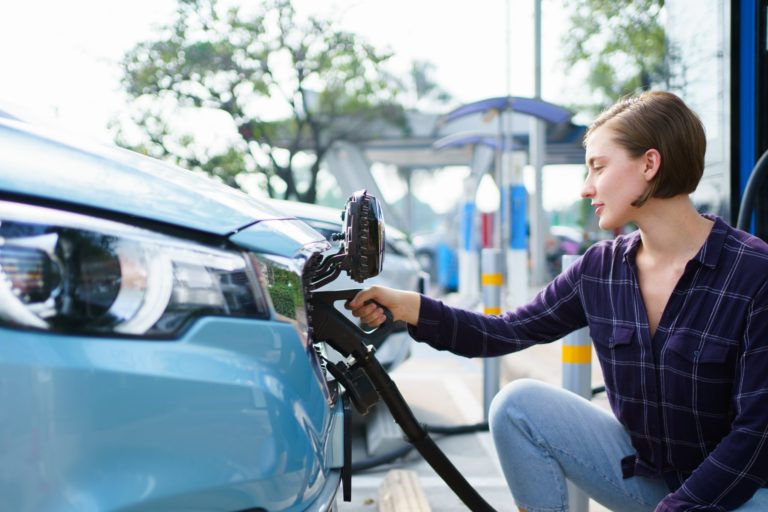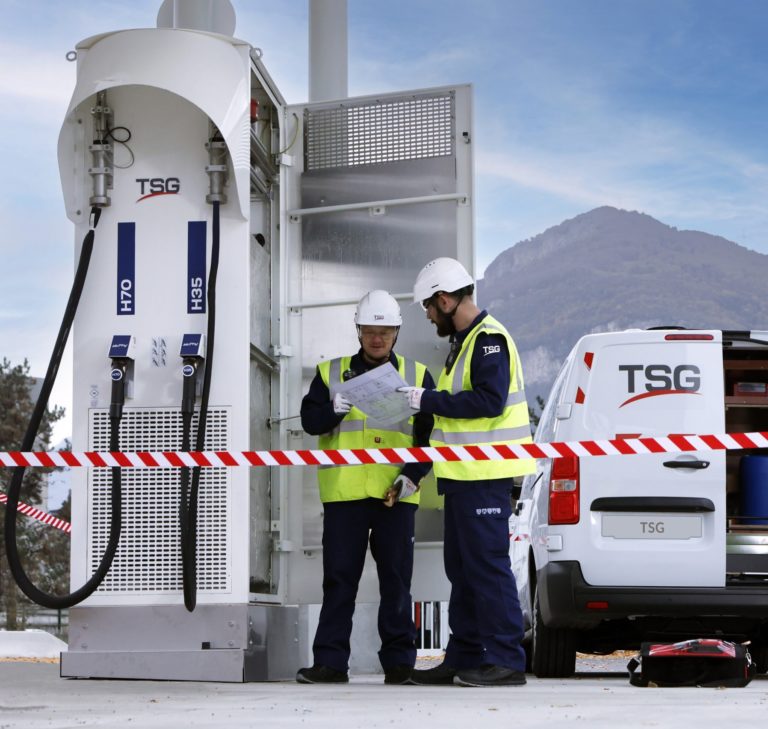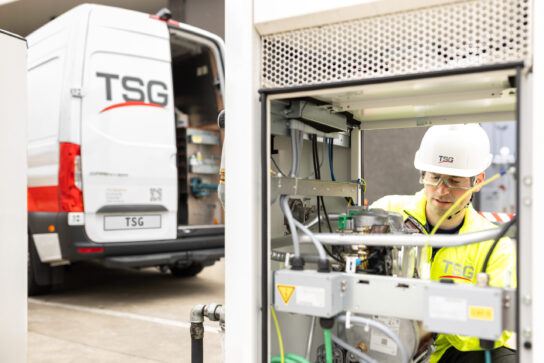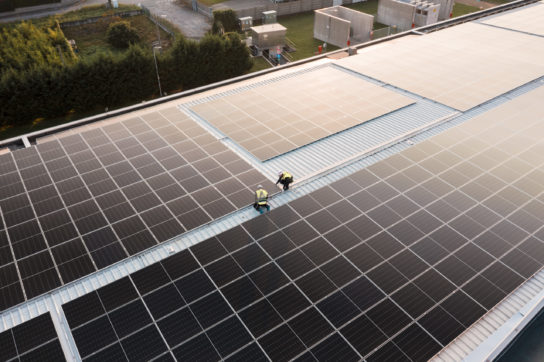Hydrogen was once viewed as the next superpower in the race to decarbonise UK roads. Since then, electric vehicles (EVs) have surged ahead leaving hydrogen fuel cell cars in the dust. So, now we ask – can hydrogen ever truly rival electricity?
The shift away from traditional fossil fuels has dramatically accelerated in recent years, greatly influenced by the public’s increasing concern about the impact of climate change and the UK Government’s net zero strategy.
Alternative energy sources include Liquified Natural Gas (LNG) Compressed Natural Gas (CNG), Hydrotreated Vegetable Oil (HVO), Liquid Petroleum Gas (LPG) and BioFuels. However, electricity and hydrogen are the dominant challengers leading the race to displace petrol and diesel.

Car Manufacturers Take the Lead
As global demand for electric vehicles continues to soar, many of the world’s major car manufacturers are electrifying their existing range and releasing new EV models. By contrast, little attention has been paid to the development of hydrogen technology, with very few hydrogen fuel cell electric vehicles (FCEV) available to choose from.
So, are hydrogen cars a real alternative to the battery electric vehicles that carmakers now see as the future of zero-emissions motoring?

Electricity versus Hydrogen
Recharging/Refuelling
The principal distinctions between EVs and FCEVs regarding recharging and refuelling relate primarily to infrastructure. Because the bulk of zero-carbon vehicles are battery-powered EVs, a robust infrastructure is being developed to satisfy the rapidly growing requirement for EV charging stations.
Furthermore, given the rising demand for EVs, developments to extend battery life and speed up the charging process are producing EVs that can travel several hundred miles on a single charge. Likewise, charging times are decreasing, with the latest EVs capable of achieving an 80% charge in approximately 30 minutes.

Whereas, refuelling stations for FCEVs, are far more difficult to locate. This can be attributed to the relative scarcity of FCEVs on the market, coupled with the public’s unfamiliarity with FCEV technology.
However, as further developments in hydrogen power transpire, creating a wider choice of vehicles and an increase in infrastructure, the speed of refuelling and the driving range per tank make FCEVs a clear winner: an FCEV can generally be fuelled in under four minutes and can travel around 300 miles on a single tank. Moreover, refuelling an FCEV closely mirrors the dispensation of petrol and diesel that everyone has become accustomed to.
At present, with the predominance of battery-powered EVs compared to Hydrogen FCEVs and the associated infrastructure, it is clear that EVs enjoy a distinct advantage in popularity.

Production and Disposal
Production and disposal issues are perhaps among the most glaring problems currently associated with standard lithium-ion battery-powered EVs.
Currently, most lithium is extracted from hard rock mines or underground brine reservoirs, and much of the energy used to extract and process it comes from CO2-emitting fossil fuels. Particularly in hard rock mining, for every tonne of mined lithium, 15 tonnes of CO2 are released into the atmosphere.*
In addition, on a global scale, only 5% of lithium-ion batteries are currently being recycled, and in some parts of the world, it is considerably less.** This situation has the potential to create a substantial risk of environmental contamination relating to the disposal of spent batteries.

Conversely, the production of hydrogen and fuel cells for FCEVs generates relatively low levels of carbon emission when made via ‘green’ processes, such as electrolysis.
Additionally, fuel cells are durable and can typically be expected to last throughout the lifetime of the vehicle, significantly reducing hazards related to disposal.
Hence, concerning production and disposal, “green hydrogen” FCEVs have the upper hand over battery-powered EVs.
*Source: Climate Portal
**Source: BBC News

Lifetime Carbon Footprint
On the surface, it would seem that FCEVs have a distinct advantage over regular EVs when it comes to their lifetime carbon footprint. FCEVs produce electricity by injecting hydrogen into the vehicle’s fuel cells, rather than drawing electricity from a battery, as with EVs. Because the only by-product of the process of converting hydrogen into electricity is water, no harmful emissions are released.
However, there is a caveat to that statement relating to the production and storage of the hydrogen used. Hydrogen can be generated through a wide range of processes, and the chosen production method will greatly impact the lifetime carbon footprint of an FCEV.

The vast majority of EVs are powered by lithium-ion (Li-ion) batteries, which do not emit CO2. However, Li-ion batteries require a considerable number of materials, including liquid electrolytes, the sourcing of which can notably increase the EV’s lifetime carbon footprint.
Therefore, when it comes to carbon emissions over the lifetime of these vehicles, there is no clear winner, as the cumulative output of both hydrogen and electric cars depends largely on how materials are derived.

Green Hydrogen Energy
Green hydrogen refers to hydrogen that is produced through the use of renewable energy sources that do not emit carbon dioxide (CO2), such as solar power, employing a process known as ‘electrolysis’. During electrolysis, water molecules (H20) that comprise two hydrogen atoms (H) and one oxygen atom (O), are subjected to an electric current through two electrodes. This action results in the water splitting into its component parts to form dihydrogen (H2) and dioxygen (O2), releasing no CO2.
Currently, grey hydrogen is the most common form of hydrogen production. Grey hydrogen is created from natural gas, or methane, using steam methane reformation but without capturing the greenhouse gases made in the process.
Hydrogen as a power source - the benefits
The only emission is water
Since the by-products of the chemical reaction that powers the fuel cell comprise heat and water, the only exhaust pipe emission from hydrogen vehicles is pure water. If sustainable energy is used during the production process of the gas, it can be considered truly green energy.
High energy density
Hydrogen has a higher energy density than batteries, both in terms of energy stored per unit weight and unit volume. With the high-pressure storage system, hydrogen vehicles can travel much further on one tank of energy than their electric counterparts.
It’s faster to refuel
Refuelling a hydrogen car takes about the same length of time as a conventional petrol or diesel vehicle, which is much faster than charging an electric vehicle.
Electricity as a power source - the benefits
Environmental value
EVs produce no exhaust emissions, which significantly reduces air pollution and greenhouse gas emissions.
Cost-effective energy
Electricity is generally cheaper than petrol, diesel or hydrogen and the price is more stable. Furthermore, EVs feature regenerative braking, which takes energy from the wheels when the driver applies brakes and uses it to top up the battery.
Reduced Maintenance Costs
There are fewer mechanical components in an electric vehicle compared with conventional vehicles and they do not require an oil change, resulting in lower servicing and maintenance costs.
Performance Benefits
EVs offer strong acceleration due to the instant torque provided by electric motors.
Conclusion
To summarise, whilst EVs currently have a stranglehold on the market, the future is starting to look promising for hydrogen as a viable energy source to co-exist with electricity in a bid to mitigate our dependence on fossil fuels.

TSG is here to help
Primarily recognised for the supply, installation and maintenance of traditional forecourt equipment, TSG has been serving the fuel retail industry for over 30 years. Now TSG is making inroads into new energies across a wide range of business sectors, assisting forward-thinking owner-operators to make the transition to alternative energies. This includes CNG, LNG Hydrogen compressors, electrolysers and the associated dispensers, together with a comprehensive electric charge point installation service.
TSG is now established as the UK’s first-choice engineering, procurement and construction (EPC) contractor for all new energies (including electricity and solar), delivering all works within a predefined timescale and budget for any application.
Furthermore, TSG employs a team of highly skilled technical engineers to provide a supreme aftercare service that operates seven days a week. The cornerstone of a successful transition is the implicit trust formed between the customer and the supplier during and following an installation. Clients can rest assured that TSG will provide the necessary support, advice and maintenance services for as long as it is required.
Author: Cheryl Ashton



